Dacia Duster vs Renault Mégane - Differences and prices compared
Costs and Efficiency:
Price and efficiency are often the first things buyers look at. Here it becomes clear which model has the long-term edge – whether at the pump, the plug, or in purchase price.
Dacia Duster has a clearly advantage in terms of price – it starts at 16300 £, while the Renault Mégane costs 35100 £. That’s a price difference of around 18780 £.
Engine and Performance:
Power, torque and acceleration are the classic benchmarks for car enthusiasts – and here, some clear differences start to show.
When it comes to engine power, the Renault Mégane has a noticeable edge – offering 218 HP compared to 158 HP. That’s roughly 60 HP more horsepower.
In acceleration from 0 to 100 km/h, the Renault Mégane is clearly perceptible quicker – completing the sprint in 7.40 s, while the Dacia Duster takes 9.40 s. That’s about 2 s faster.
In terms of top speed, the Dacia Duster performs somewhat better – reaching 180 km/h, while the Renault Mégane tops out at 160 km/h. The difference is around 20 km/h.
There’s also a difference in torque: Renault Mégane pulls noticeable stronger with 300 Nm compared to 230 Nm. That’s about 70 Nm difference.
Space and Everyday Use:
Cabin size, boot volume and payload all play a role in everyday practicality. Here, comfort and flexibility make the difference.
Seats: offers more seating capacity – vs .
In curb weight, Dacia Duster is evident lighter – 1377 kg compared to 1719 kg. The difference is around 342 kg.
In terms of boot space, the Dacia Duster offers clearly perceptible more room – 517 L compared to 389 L. That’s a difference of about 128 L.
In maximum load capacity, the Dacia Duster performs somewhat better – up to 1609 L, which is about 277 L more than the Renault Mégane.
When it comes to payload, Dacia Duster minimal takes the win – 453 kg compared to 446 kg. That’s a difference of about 7 kg.
Who comes out on top?
Overall, the Renault Mégane shows itself to be edges out slightly and secures the title of DriveDuel Champion.
It convinces with the more balanced overall package and proves to be the more versatile choice for everyday use.
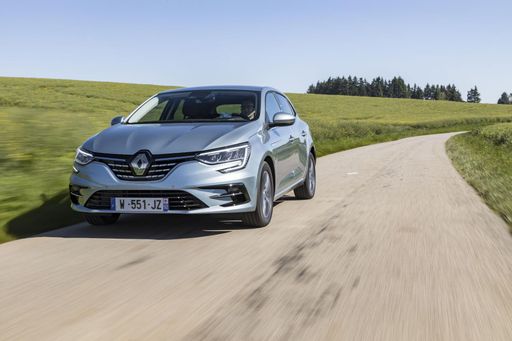 @ Renault Group Media
@ Renault Group Media
Renault Mégane
Costs and Consumption
View detailed analysis
Engine and Performance
View detailed analysis
Dimensions and Body
View detailed analysis
Dacia Duster
The Dacia Duster is a no-nonsense compact SUV that delivers rugged practicality and surprisingly comfortable everyday driving without fuss. It might not win any beauty contests, but its honest design, easy-to-live-with cabin and tough attitude make it a smart pick for buyers who want reliable transport without luxury frills.
details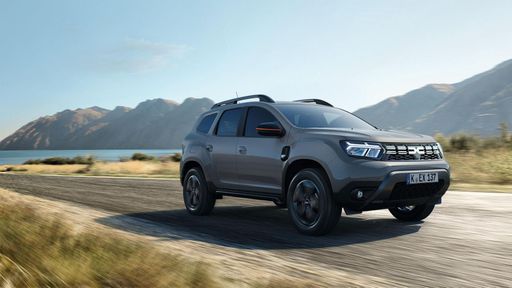 @ Dacia / Renault Group Media
@ Dacia / Renault Group Media
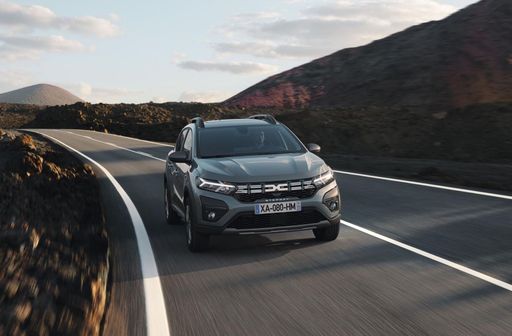 @ Dacia / Renault Group Media
@ Dacia / Renault Group Media
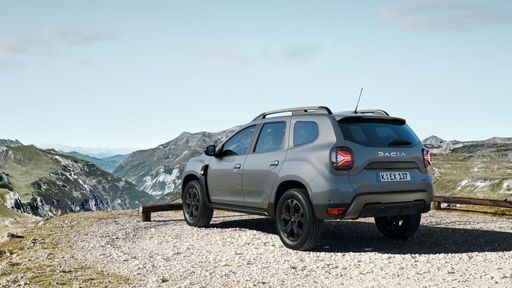 @ Dacia / Renault Group Media
@ Dacia / Renault Group Media
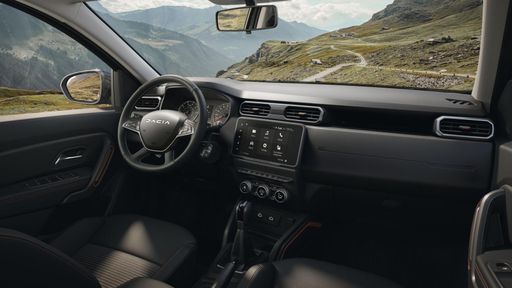 @ Dacia / Renault Group Media
@ Dacia / Renault Group Media
Renault Mégane
The Renault Mégane blends Gallic flair with practical everyday charm, showing that sensible transport can still have personality and poise. It’s a smart pick for buyers who want a comfortable, stylish hatchback that feels a little more special than the usual commute companion.
details @ Renault Group Media
@ Renault Group Media
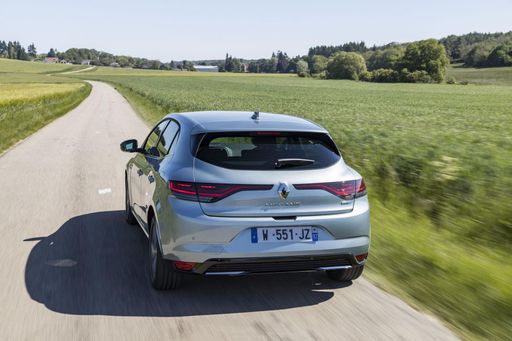 @ Renault Group Media
@ Renault Group Media
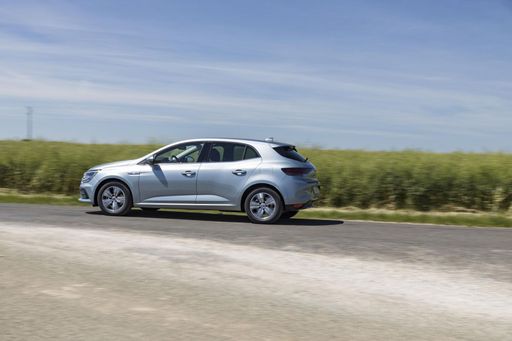 @ Renault Group Media
@ Renault Group Media
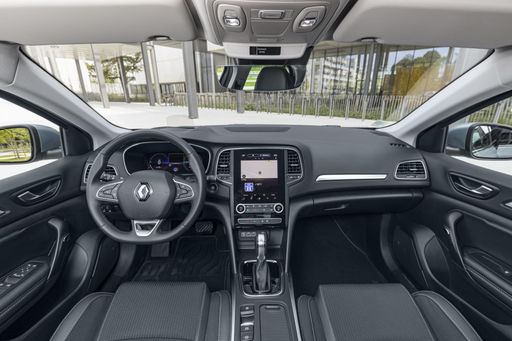 @ Renault Group Media
@ Renault Group Media
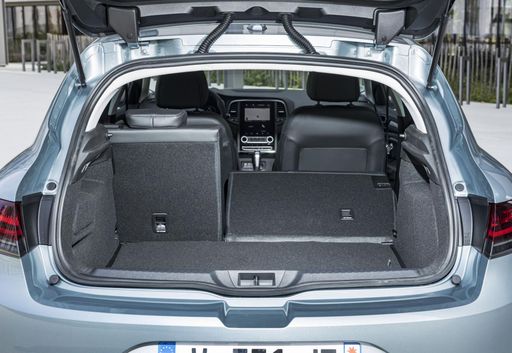 @ Renault Group Media
@ Renault Group Media
 @ Dacia / Renault Group Media
@ Dacia / Renault Group Media
|
 @ Renault Group Media
@ Renault Group Media
|
|
|
|
Costs and Consumption |
|
|---|---|
|
Price
16300 - 24900 £
|
Price
35100 - 38500 £
|
|
Consumption L/100km
4.7 - 7.5 L
|
Consumption L/100km
-
|
|
Consumption kWh/100km
-
|
Consumption kWh/100km
15.40 kWh
|
|
Electric Range
-
|
Electric Range
452 km
|
|
Battery Capacity
0.60 kWh
|
Battery Capacity
-
|
|
co2
107 - 124 g/km
|
co2
0 g/km
|
|
Fuel tank capacity
50 L
|
Fuel tank capacity
-
|
Dimensions and Body |
|
|---|---|
|
Body Type
SUV
|
Body Type
SUV
|
|
Seats
5
|
Seats
5
|
|
Doors
5
|
Doors
5
|
|
Curb weight
1377 - 1455 kg
|
Curb weight
1719 kg
|
|
Trunk capacity
348 - 517 L
|
Trunk capacity
389 L
|
|
Length
4343 mm
|
Length
4200 mm
|
|
Width
1813 mm
|
Width
1783 mm
|
|
Height
1656 - 1659 mm
|
Height
1505 mm
|
|
Max trunk capacity
1414 - 1609 L
|
Max trunk capacity
1332 L
|
|
Payload
450 - 453 kg
|
Payload
446 kg
|
Engine and Performance |
|
|---|---|
|
Engine Type
Petrol MHEV, Full Hybrid, LPG
|
Engine Type
Electric
|
|
Transmission
Manuel, Automatic
|
Transmission
Automatic
|
|
Transmission Detail
Manual Gearbox, Automated Manual, Dual-Clutch Automatic
|
Transmission Detail
Reduction Gearbox
|
|
Drive Type
Front-Wheel Drive, All-Wheel Drive
|
Drive Type
Front-Wheel Drive
|
|
Power HP
115 - 158 HP
|
Power HP
218 HP
|
|
Acceleration 0-100km/h
9.4 - 11.6 s
|
Acceleration 0-100km/h
7.40 s
|
|
Max Speed
180 km/h
|
Max Speed
160 km/h
|
|
Torque
190 - 230 Nm
|
Torque
300 Nm
|
|
Number of Cylinders
3 - 4
|
Number of Cylinders
-
|
|
Power kW
84 - 116 kW
|
Power kW
160 kW
|
|
Engine capacity
1199 - 1789 cm3
|
Engine capacity
-
|
General |
|
|---|---|
|
Model Year
2025
|
Model Year
2025
|
|
CO2 Efficiency Class
D, C
|
CO2 Efficiency Class
A
|
|
Brand
Dacia
|
Brand
Renault
|
What drivetrain options does the Dacia Duster have?
The Dacia Duster is offered with Front-Wheel Drive or All-Wheel Drive.
The prices and data displayed are estimates based on German list prices and may vary by country. This information is not legally binding.
